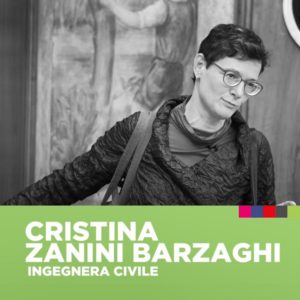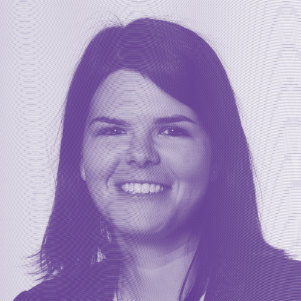I’m a civil engineer specialized in structural engineering. I work as a civil engineering consultant, manage small building projects, am a member of a selection committee, and have taught courses at the University of Applied Sciences and Arts (HES). I’m currently very involved in politics – it’s important for there to be engineers in that area, too. At the municipal government in Lugano, I handle property management and promote new projects. Building is a culture for women as well.
I’m passionate about everything I do. I’m motivated by my desire to make a better future for those who come after us, by contributing something concrete to future generations.
My career path. In secondary school, I did the science curriculum. Nobody in my family had been to university before, but my parents supported all five of their children in our choices. I always knew I wanted to go to university, and when someone told me about engineering, it appealed to me. I studied at ETH Zurich, where there were three women and 120 men. Everything went well, except with the professors sometimes, but I have to say that I was quite talented. After that, I returned to Ticino and worked in an engineering firm for seven years. After I got married and had two children, I started freelancing, and as I gained more experience, I created a firm with two colleagues (Zanini & Borlini). We won several competitions and at one point had up to 15 employees. My greatest accomplishment was building the periscope at the main train station in Pollegio. Reinforced concrete is my thing and it’s what I taught at HES, for example. I even published a manual on concrete structures called Strutture di calcestruzzo, the third edition of which came out in 2019.
I went into politics because I think engineers need to be in charge of land planning, infrastructure and building conservation : it is a very technical subject, not just political. Over the years, I have become really involved in associations for female professionals, such as the Swiss Association of Women Engineers, ASFI. I’m also part of a housing cooperative for low-income pensioners, called Residenza Emmy. I’ve always had the unfailing support of my husband, and we take care of our family together.
A downside or obstacle ? There are still too few women in our field because of prejudices that are learnt very early on at school. On the 50th anniversary of women’s suffrage in Ticino (1969), I dove into our history and discovered that women were absent in every sector in the 1950s. We’ve made progress since then, but what worries me now is that everyone uses technology, but the software is always developed by young white males – women still aren’t present.
I’m proud that I never get bored and that I’ve had such varied experiences. I work on projects and lead construction work, mentor apprentices, teach courses at the university, do the bookkeeping, help manage the household and have raised a son and a daughter – all of that makes for a well-rounded experience.
The Proust Questionnaire
This section is available only in the original languageJe suis plutôt sédentaire. J’aime lire et cuisiner ; les travaux qui lient l’intellect et le manuel, comme le tricot et le patchwork, avec géométrie et couleurs.
Marie Curie, découverte petite fille, elle m’a définitivement marquée au-delà de la science : son espoir dans le futur et son courage dans la vie privée. Et puis Jürg Conzett, actuellement le plus grand ingénieur civil suisse, Fabiola Gianotti physicienne et directrice du CERN et beaucoup d’autres femmes surtout.
Frauen im Laufgitter (Iris von Roten), bible féministe suisse, encore très actuelle et Les figures de l’ombre (Theodore Melfi), histoire des mathématiciennes afro-américaines à la NASA dans les années soixante.
Ma vieille calculatrice HP modèle 11C
Le rouge
Le double de femmes ingénieures d’ici à dix ans, on est à 10%…




